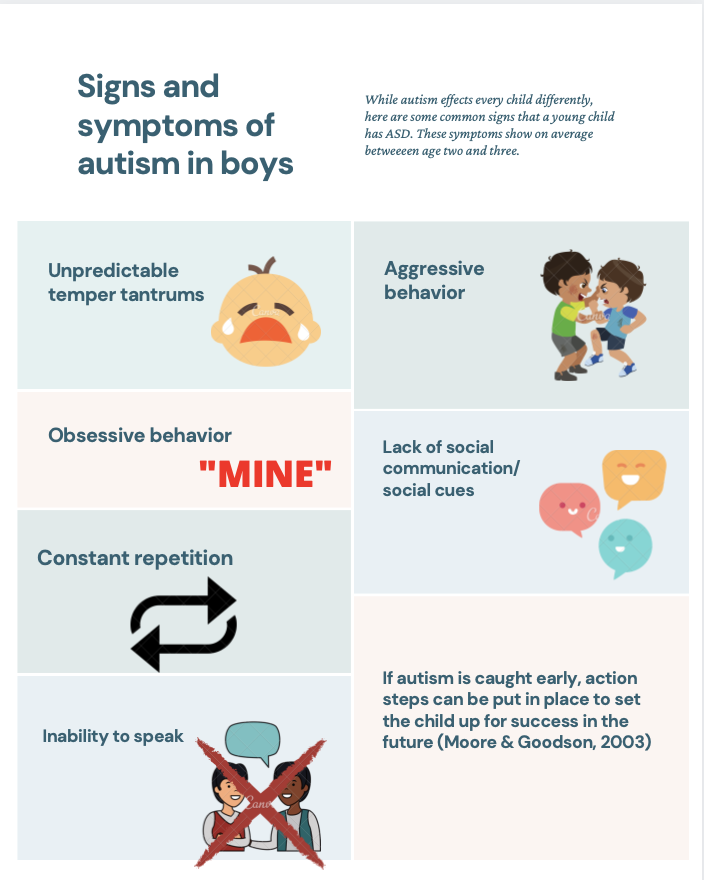Can Autism Spectrum Therapies support developing independence in teens with ASD?
Comprehending the Influence of Behavioral Autism on Life and Social Communications
You might not recognize exactly how deeply behavioral autism impacts daily life and social communications. Individuals on the range commonly navigate a globe filled up with communication hurdles and sensory overload. These difficulties can lead to aggravation and seclusion, affecting their connections and overall wellness.
Specifying Behavioral Autism and Its Characteristics
Behavioral autism, frequently referred to as autism spectrum disorder (ASD), includes a variety of problems identified by challenges in social communication, communication, and recurring behaviors. You may notice that people with ASD frequently battle to translate social signs, which can result in misunderstandings in conversations. They might find it tough to establish eye contact or participate in tiny talk, making social scenarios really feel frustrating.
Interaction troubles can show up in different methods, from postponed speech advancement to a preference for making use of fewer words. Repeated habits, such as hand-flapping or shaking, can act as coping mechanisms to handle stress and anxiety or sensory overload. These characteristics can profoundly influence life, making it vital for you to understand and support those with ASD. By recognizing these characteristics, you can foster an atmosphere that advertises acceptance and urges reliable communication, helping people with autism prosper in their day-to-day communications.
The Spectrum of Autism: Comprehending Variability in Habits
Autism spectrum condition (ASD) isn't a one-size-fits-all diagnosis; it differs commonly among people. You might encounter people that are extremely verbal and engage quickly in discussions, while others could favor solitary activities or interact non-verbally.
In addition, the method individuals with ASD reply to sensory input can differ substantially; some may be overwhelmed by bright lights or loud noises, whereas others prosper in stimulating environments. The spectrum also includes differences in social communications; some individuals might struggle to analyze social signs, while others navigate social settings with relative simplicity. Recognizing this variability is crucial, as it aids you value everyone's one-of-a-kind experience and dressmaker assistance to their certain demands, cultivating an extra inclusive atmosphere for everyone.
Communication Challenges Encountered by Individuals With Autism
When you communicate with individuals on the autism spectrum, you may observe their special communication difficulties. They commonly encounter problems with both nonverbal and spoken cues, which can influence their social communications. Understanding these obstacles is vital for cultivating better connections and support.

Verbal Communication Problems
Lots of people on the autism spectrum experience verbal communication difficulties that can significantly influence their day-to-day interactions. You might discover it testing to express your thoughts, feelings, or needs clearly. This can result in irritation for both you and those around you, as misconceptions take place. You may deal with initiating conversations, preserving a subject, or comprehending nuances in speech. Often, you may choose making use of easy language or repetitive expressions, which can limit your capability to participate in deeper discussions. Your rate, quantity, or tone could not line up with social expectations, creating others to misunderstand your intentions. Identifying these difficulties can assist you and your assistance network establish methods to improve communication and foster far better links with others in your day-to-day live.
Nonverbal Interaction Barriers
Spoken interaction isn't the only difficulty individuals on the autism range face; nonverbal communication obstacles can be just as significant. You could discover it difficult to analyze body movement, facial expressions, and eye get in touch with, which are crucial for efficient communication. These challenges can bring about misconceptions or misconceptions of social signs, making interactions feel complex or frustrating. You might struggle to reveal your own emotions with nonverbal ways, leaving others unclear of your objectives or feelings. This separate can develop sensations of isolation and disappointment. Recognizing these barriers is critical for promoting understanding and compassion in your interactions. By resolving nonverbal interaction, you can find methods to improve your social experiences and improve your overall quality of life.
Social Interaction Effects
Social communications can frequently really feel overwhelming because of the distinct communication difficulties dealt with by people with autism. You could fight with translating social cues, making it tough to comprehend sarcasm or body movement. This can bring about find here misunderstandings or uncomfortable moments in conversations. In addition, launching and maintaining discussions may really feel challenging, causing stress and anxiety in social circumstances. You may favor structured atmospheres, making spontaneous communications unpleasant. It's additionally common to experience problem in taking part in small talk, which can impede forming new relationships. Recognizing these difficulties can assist you find methods to enhance communication, such as practicing social abilities in secure settings or using visual help - Aba Therapist Near Me. Comprehending your needs allows you to browse social communications with better self-confidence and convenience.
Social Interaction and Partnership Building in Autism
While structure partnerships can be challenging for people with autism, understanding their unique viewpoints and interaction designs can foster purposeful links. You could see that lots of individuals on the range choose straight interaction and might fight with social hints or small talk. By being uncomplicated in your communications, you can help create a setting where they really feel comfy.
Take the time to listen and observe how they share themselves. This insight can direct you in guiding conversations better. Involving in shared passions can likewise function as a bridge to deeper links. Whether it's a hobby, a preferred program, or a mutual enthusiasm, these usual strings can open doors to relationship.
Daily Life Routine: Browsing Strategies and challenges
Maneuvering day-to-day life regimens can be particularly challenging for people with autism, particularly when unexpected adjustments take place. To navigate these challenges, take into consideration implementing aesthetic timetables or checklists.
Establishing a regimen that includes sensory breaks can additionally be useful. You can prepare brief breaks throughout your day to reenergize. It's important to interact with those around you, allowing them know your requirements and choices. This helps produce an understanding atmosphere.
Finally, practice mindfulness methods to manage stress and anxiety. Straightforward breathing exercises or grounding techniques can make a considerable difference. By including these methods, you can improve your daily regimen and reduce disturbances, making life really feel extra convenient.
Staminas and Abilities of People on the Autism Range
Recognizing everyday life regimens is simply one element of the autism experience. Many people on the autism range have remarkable strengths and abilities that establish them apart.
Additionally, your memory skills typically radiate, specifically in areas of passion. Autism Behavioral Therapy. This flair for maintaining details can make you a valuable source in areas like art, modern technology, or science. You might likewise display strong visual thinking, enabling you to picture complicated ideas and resolve troubles artistically
In addition, your special perspective on the world can foster empathy and understanding in others, improving social communications. Welcoming these staminas not only boosts your self-confidence but likewise aids others value the varied talents you offer the table.
Creating Inclusive Environments for People With Autism
Creating comprehensive atmospheres for people with autism starts with designing sensory-friendly rooms that provide to their distinct needs. You can likewise promote possibilities for social communication, helping to construct links and relationships. By making these modifications, you'll add to an extra welcoming environment for everybody.
Creating Sensory-Friendly Spaces
While creating sensory-friendly rooms, it's important to reflect on the special needs of individuals with autism. Incorporate silent areas where individuals can retreat and reenergize when bewildered. Include aesthetic routines or clear signage to help people browse the room confidently.
Promoting Social Interaction Opportunities
Designing sensory-friendly areas not just addresses individual convenience but likewise sets the stage for significant social interactions among individuals with autism. To advertise these communications, create comprehensive settings that invite involvement. Organize structured activities, like art courses or group games, that encourage collaboration without overwhelming sensory input. Use aesthetic aids and clear communication to aid every person engage easily. Encourage peer mentoring, pairing individuals with autism with supportive peers that can lead them through social circumstances. In addition, think about organizing routine community occasions that commemorate neurodiversity, promoting acceptance and understanding among all participants. By executing these techniques, you can improve social possibilities, aiding individuals with autism build friendships and strengthen their social abilities in a safe, welcoming setting.

Regularly Asked Questions
How Can Buddies Assistance Someone With Behavioral Autism?
You can support a pal with behavior autism by being person, listening actively, and respecting their limits. Involve in activities they delight in, interact freely, and produce a comfy setting where they really feel valued and understood.
What Resources Are Offered for Moms And Dads of Children With Autism?
You can check out article source various sources for parents of children with autism, including support system, academic sites, and local social work. Linking with other moms and dads can additionally useful reference supply important insights and shared experiences to aid navigate difficulties.
Can Behavioral Autism Change Over Time?

Yes, behavioral autism can change gradually. You might discover changes in interaction, social skills, and actions as your child expands. Early treatment and support usually play important functions in these developing changes.
Exactly How Do Sensory Level Of Sensitivities Affect Daily Life?
Sensory sensitivities can make daily experiences frustrating. You could battle with loud noises or bright lights, leading to stress and anxiety or avoidance. Discovering settings that accommodate your needs can considerably boost your comfort and overall every day life.
What Are Common Misconceptions Regarding Behavioral Autism?
You may assume behavior autism just influences interaction abilities, but it's more complex. Numerous presume people do not have compassion or knowledge, which isn't real. Understanding these misunderstandings aids foster acceptance and support for those on the range.
Behavior autism, commonly referred to as autism range disorder (ASD), encompasses an array of problems identified by difficulties in social communication, communication, and repeated habits.Social interactions can commonly feel overwhelming due to the special communication obstacles encountered by individuals with autism.Designing sensory-friendly spaces not only addresses individual convenience but additionally establishes the phase for significant social interactions among people with autism. Motivate peer mentoring, matching individuals with autism with encouraging peers that can assist them with social situations. By executing these techniques, you can improve social opportunities, helping people with autism develop friendships and reinforce their social skills in a safe, inviting setting.